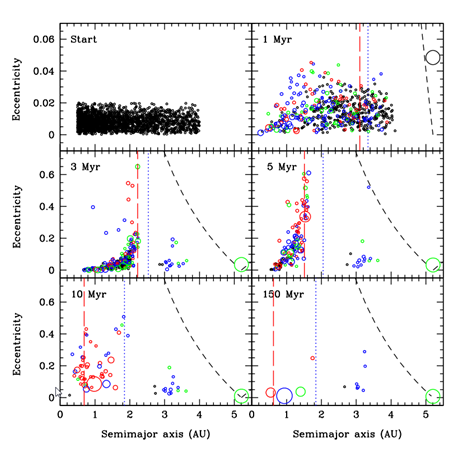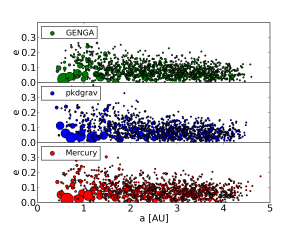From planetesimals to planets
Dr. Joachim Stadel
This part of our project focuses in detail on the late stages of planet formation using direct N-body simulations which follow all the gravitational interactions between planetesimals over hundreds of millions of orbits, including an accurate treatment of close approaches of multiple bodies as well as their collisions.

A simulation of the evolution of the inner rocky proto-planetary disk over 200 Myr. The circles show the sizes of planetesimals and planets and the colours indicate their spin angular momenta. The vertical dashed and short dashed lines indicate the locations of the ν5 and ν6 resonances, respectively. The black dashed curve is given by a(1+e) = aJ; particles in the right side of this curve experience orbital crossing with Jupiter. Note the difference in scales of e between the top panels and others (Morishima et al 2010).
No single model can currently explain all of the observations we have for our own Solar System; the radial mixing of elements, the concentration of the terrestrial planets (proximity of Earth and Venus orbits), the late time bombardment, the size and semi-major axis of Mars, the distribution of asteroids and Kuiper belt objects, the configuration of the gas giants. This is one of the main long term goals of this project, since only direct simulations can follow self consistently the secular evolution, resonant interactions, chaotic dynamics, Type-I migration, mixing due to gravitational scattering, and giant impacts. In order to achieve this goal we need both numerical advances as well as better initial conditions for the distribution and properties of the planetesimals and gas disk coming from part I of our project.



